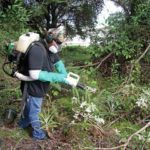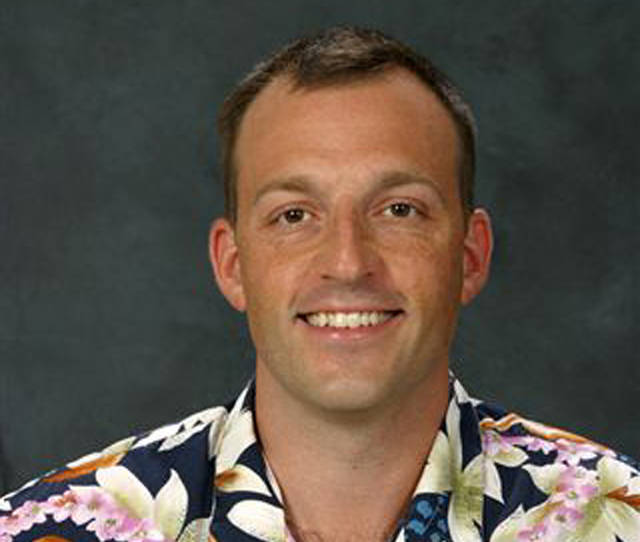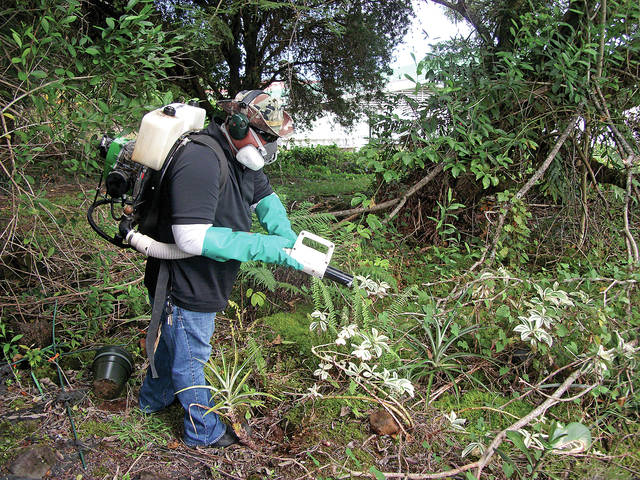Audit slams outbreak response: Poor communication by DOH during dengue crisis among issues cited in state report




KAILUA-KONA — On Oct. 28, 2015, a week after confirming a case of dengue fever in a patient who had visited Hookena Beach, the state Department of Health’s Laboratory Division confirmed four more cases of the disease.
The results, according to a review of the outbreak, suggested to state health officials that “they are dealing with a widespread infection.”
ADVERTISING
Eight days later, on Nov. 5, the department’s Vector Control Branch sprayed the Hookena Beach area, but Hawaii County officials only found out about the plan to do so — and of the island’s dengue fever outbreak — after the general public did.
Hawaii County’s Civil Defense administrator at the time expressed concern about the lack of heads-up given the beach’s heavy use by campers.
It’s just one of many examples of a breakdown in communication reported throughout the dengue fever outbreak on Hawaii Island between October 2015 and April 2016 that were cited in a state audit of the Department of Health’s Disease Outbreak Control Division critical of the way the agency handled that and other outbreaks across the state.
State Auditor Leslie Kondo also cited in the report to the governor and lawmakers problems with end-of-outbreak reviews and reports intended to give officials better opportunities for improvement as well as a lack of following protocols and maintaining records, which “may be hampering outbreak response.”
Outbreak critiques
The Disease Outbreak Control Division investigated 148 outbreaks of varying size between January 2015 and December 2016, but auditors focused their attention on three particular high-profile ones: dengue fever on Hawaii Island, an outbreak of hepatitis A connected to scallops and a third involving ogo, or seaweed, infected with salmonella.
Dengue hit the Big Island exclusively. The hepatitis outbreak hit the Big Island in spots, but was primarily an Oahu and Kauai issue, while ogo was an Oahu issue.
And while auditors acknowledged “every disease is different” with outbreaks having aspects unique to their time and place, auditors said having plans and protocols in place can at least provide “clarity and direction” during those times.
But DOH and Disease Outbreak Control didn’t have those components in place, auditors said, and weren’t able to provide adequate documentation and consistent information about how they responded to the outbreaks in question.
In each outbreak, auditors found instances of breakdowns in communication, lax procedures and inconsistent reports from the outbreaks.
Aside from the incident when county officials weren’t notified about efforts to spray Hookena Beach in advance of the public, there also was disagreement about whether maps based on patients’ addresses should be shared with the county or whether privacy laws prevent their distribution.
At the time of the audit, the report said, the department hadn’t yet resolved that question, though the agency is referenced as saying it hoped its All Hazards Preparedness Plan would address that and other issues.
DOH responds, agrees
In response to the audit, Department of Health Director Dr. Virginia Pressler said the agency understood the audit’s conclusion and recommendations.
In a letter included as part of the published report, Pressler said the department itself recognized a need to improve following the dengue fever outbreak and that the audit “validated our own findings.”
Department spokeswoman Janice Okubo also said the audit “validated what we had already seen in our internal review process.”
Pressler said their self-assessment has led to a full reorganization plan, a process that spanned about a year and was approved by the governor last week, giving the department the green light to move forward.
The effort, she said, elevates the response to disease outbreak from a division to one with “direct oversight and involvement by the director of health.”
“In addition,” Pressler wrote, “the reorganization broadens the focus from being singularly focused on disease outbreak to all crises affecting the health and well-being of Hawaii’s people.”
Raising that program to the director’s level, Okubo said, will make it easier to coordinate with other divisions and agencies.
Okubo added that the audit shouldn’t detract from the agency’s efforts on the outbreaks and the work done by staff.
“We don’t want the report to discount that hard work and commitment by those individuals,” she said.
Earlier criticism validated
State Sen. Josh Green and state Rep. Richard Creagan, both of whom represent parts of Kona to Ka‘u, called on professionals from the Centers for Disease Control and Prevention and World Health Organization to be brought in during the dengue outbreak’s early phases.
Green said Thursday the audit report “reveals what we knew to be true of the DOH response on dengue and rat lungworm disease, that it was disorganized, Oahu-centric and professionally dismissive to neighbor island experts and health care providers.”
“We physicians (and legislators) asked for basic reporting, data sharing and real-time updates in addition to clinical field support to protect our community, we got almost none of these,” Green added. “Instead, we got the cold shoulder of the director, obstacles to communication and excuses.”
Changes now and in future
In response to a recommendation that the department resolve what can and can’t be shared with other agencies, Pressler wrote they are looking to the Attorney General’s Office to determine what they can and can’t disclose “so that we can be confident about what we can and cannot offer during an outbreak response.”
The report also points to confusion about who was actually in charge of the response effort, citing three separate reports between November 2015 and January 2016 in which three different people were identified as “incident commander.”
And while the report says the DOH identified the former Hawaii County Civil Defense administrator as the person in charge during the dengue response, “the division did not provide the County of Hawaii and County of Hawaii Civil Defense director with updates on the number of cases, key demographics or disease ‘hot spots,’ making it difficult for them to respond to the outbreak.”
Since that outbreak, communication between the state and county appears to have changed for the better.
Civil Defense Administrator Talmadge Magno, who assumed leadership of the agency at the start of 2017, said Thursday he can’t speak to interactions between the state and county agencies before his tenure, but that the two agencies have been good about speaking to each other the past year.
“They communicate with me,” he said. “So I cannot attest to any difficulties in communication.”
Pressler, too, said its own reorganization plan “clearly defines the roles and responsibilities of Department of Health employees to respond more effectively to outbreaks, eliminating any ambiguity and providing clarity on the chain of command.”
And regarding communication, she said, keeping the public informed is one of their objectives identified in the reorganization, which she hopes addresses the shortcomings raised in the report.
The Office of the Auditor also found in each of the three outbreaks that the division didn’t follow the disease-specific investigation protocols it has in place, noting incidences of missing reports, case files and investigation forms.
Again citing the reorganization effort, Pressler said the Disease Outbreak Control Division will keep oversight of the investigation of disease outbreaks, enabling them to concentrate efforts on record keeping.
Email Cameron Miculka at cmiculka@westhawaiitoday.com.





